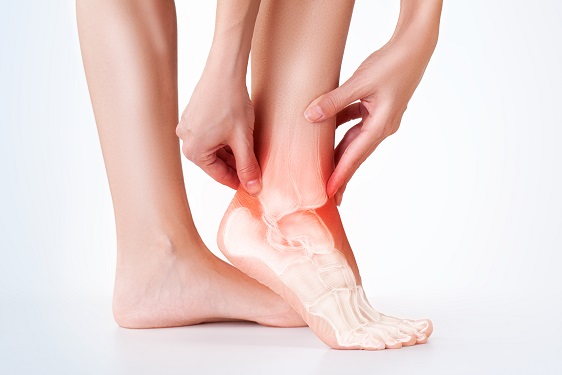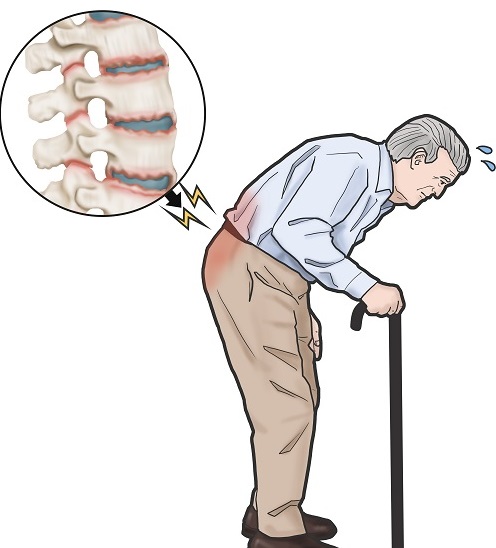Foot pain is one of the common musculoskeletal problems especially seen in women. The most important causes are overuse, inappropriate shoewear and recurrent minor injuries that are easily forgotten. In inflammatory rheumatic diseases (such as rheumatoid arthritis, gout, ankylosing spondylitis), the foot is usually affected. In diabetes mellitus, foot problems (such as charcot joint, foot infections, diabetic neuropathy) can also be seen.
Who has foot and ankle pains?
Foot and ankle pain can be seen in all age groups. However, it is more common, especially in women of middle and advanced age. Foot pain is common in athletes, dancers, in people who wear high heels, tight-ended shoes, patients with diabetes mellitus, inflammatory rheumatic disease (such as gout, rheumatoid arthritis), and patients with congenital or acquired foot deformities such as pes planus, pes cavus.
What are the causes of foot and ankle pain?
Foot and ankle pains can be caused by many diseases. The main causes can be listed as follows: ankle sprains, ankle problems such as heel spine, plantar fasciitis, tendinitis/tenosynovitis, bursitis, arthritis, nerve compressions, pes planus, pes cavus, fractures, diabetic foot deformities and ulcers, thumb deformities such as hallux valgus, hallux rigidus, hammer finger, claw finger can cause foot and ankle pains. Plantar Fasciitis is the most important cause of heel pain in middle and advanced age. Its typical finding is the pain that occurs when you get out of bed in the morning or press the ground after rest, and patients indicate that the pain decreases after some walking. They're usually one-sided. Most patients respond adequately to conservative treatment. The first stage of treatment is simple stretching exercises for Achilles’ tendon and plantar fascia. Ice and massage can also be effective. No prescription foot orthosis is also recommended. If the pain does not improve, physical therapy, injections, measured foot orthosis and supporting shoes should be considered as treatment options. A recently used treatment method is extracorporeal shock wave therapy (ESWT).
Do foot and ankle pains require further examination?
In the presence of a history of trauma, a direct x-ray should be taken due to suspected fractures. Magnetic resonance imaging (MRI) helps with diagnosis when there is no response to conservative treatments, when there is a suspected tear in the ligaments, when there is instability in the ankle, considering the lesion of soft tissue. If there is swelling, redness, heat increase in the foot and ankle, a differential diagnosis is required in terms of arthritis, rheumatic blood tests are required. Musculoskeletal ultrasonography is another method that can be used in the presence of edema, in the differential diagnosis of soft tissue lesions such as tendinitis and bursitis.
How to treat foot and ankle pains?
The right treatment is possible with the right diagnosis. For this, it is necessary to apply to the relevant specialist immediately. In general, the aim of the treatment is to reduce pain and inflammation and to prevent the formation and progression of deformities. Most patients with foot and ankle pain can be treated with non-surgical treatment methods called conservative treatment (foot and ankle orthosis, raised orthopedic shoes with heel media, removable walking plasters (Glass walkers), use of compression socks, drug therapy, physical therapy and exercise, local or regional injections). Anti-rheumatic drugs try to reduce inflammation and pain in the treatment of inflammatory pain. Local cold and hot applications can be made. Cold application is recommended especially in acute traumas and arthritis cases. On the other hand, patients with degenerative diseases benefit from hot applications. There are also minimally invasive pain treatment methods. These include prolotherapy, PRP and intra-joint steroid injections.
What should be considered to get rid of foot and ankle pains?
The most important step to get rid of pain is the right choice of shoes.
The most suitable shoe is a shoe that sits firmly on the foot without squeezing the foot, but also allows enough movement to the toes. There should be a 1 cm gap between the first toe and the shoe tip.
The inner base of the shoe should support the arches of the foot and the sole should rise upwards, especially at the end where the fingers are located, and wrap the toes from the side. Thus, calluses and other finger injuries are prevented.
The shoe should not wrap the foot well and allow it to sprain.
The shoe should allow your foot to breathe.
It is desirable to tie the shoelaces as high as possible, without hindering the ankle movement too much.
In order for your shoes to last, you should often change your socks and shoes, keep your shoes clean, rest them, mold them and let them dry in natural conditions. Never dry in the sun or in front of the stove because it causes the skin to set.
When buying shoes, try on socks that you will wear in sports and in the afternoon. Even walk or run through the store to see the suitability of the shoe.
Buy shoes that fit the type of sport you're going to do.
When your shoe wears out, refresh it. For this, pay attention to abrasions, since they can cause injuries and pain.
If you have a foot problem or an old injury, you may need to use insoles or orthosis at the recommendation of your physician.
If you're overweight, try to lose weight.
Do the exercises recommended by your physician regularly. You can prevent recurrence of your disease by exercising.






